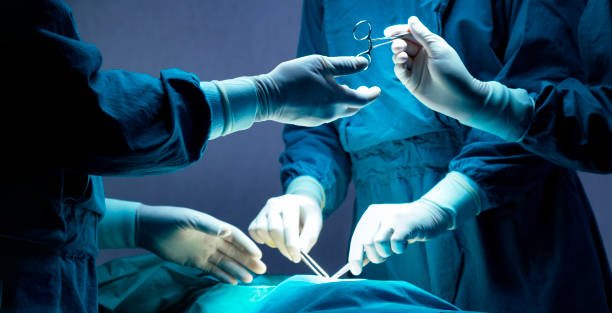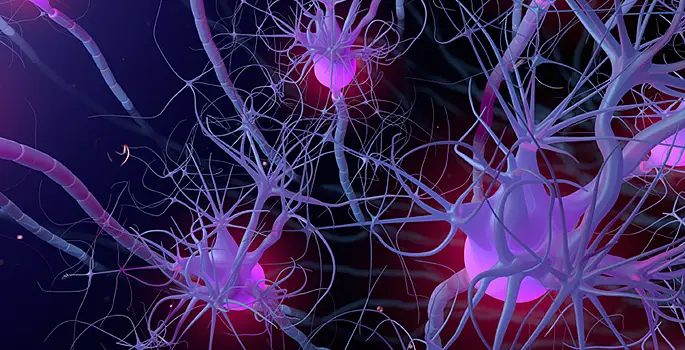For most people, the operating room is a mysterious place—a cold, sterile chamber of stainless steel and blinking lights, where masked figures perform the ultimate acts of science, skill, and courage. We hear about surgeries in the abstract: “She had her appendix out,” or “He had heart surgery.” But what really happens behind those doors once the anesthesia takes hold, once your eyes close and you surrender your body to strangers?
Surgery is not just a technical process; it’s a complex, finely tuned interplay of biology, physics, chemistry, engineering, human psychology, and pure choreography. It’s the meeting point of modern science and ancient art, honed by centuries of trial, error, and breathtaking discovery.
This article takes you deep into the science of surgery—step by step—revealing the intricate processes that unfold from the moment you are wheeled into the OR to the final suture and beyond. From anesthesia and instruments to human decisions and post-op biology, it’s a journey through one of the most remarkable achievements of the human mind.
A Brief History of Cutting and Healing
Surgery has a long and bloody history. Ancient Egyptian papyri from around 3000 BCE describe the treatment of wounds, fractures, and dislocations. In ancient India, Sushruta, often called the father of surgery, documented over 300 surgical procedures in the 6th century BCE.
But for centuries, surgery was often a death sentence. Without anesthesia, patients endured excruciating pain. Without sterilization, infection was almost guaranteed. Surgeons, often barbers or tradesmen, relied on speed rather than precision.
Everything changed in the 19th century. The discovery of ether and chloroform gave rise to modern anesthesia. Joseph Lister’s introduction of antiseptic technique in the 1860s revolutionized survival rates. Advances in anatomy, pathology, and microbiology transformed surgery into a disciplined science.
In the 20th and 21st centuries, the operating room became a cathedral of technology: high-definition imaging, robotic assistance, laser tools, and microinstruments allow surgeons to perform feats once thought impossible—replacing hearts, separating conjoined twins, restoring sight, and even operating on fetuses in the womb.
But even with all this, the heart of surgery remains the same: to cut, to heal, to save.
Before the First Cut: The Pre-Op Puzzle
Every surgery starts long before the patient lies on the table. The preoperative phase is where science meets strategy.
When a patient is scheduled for surgery, a detailed pre-op evaluation begins. This includes a medical history, physical examination, blood tests, imaging, and often consultations with specialists. The goal is to assess the patient’s ability to tolerate surgery, identify risks, and plan accordingly.
Does the patient have diabetes? Heart disease? Allergies to medications? A history of clotting disorders? Each factor affects the surgical plan. The anesthesiologist assesses the airway, reviews previous reactions to anesthesia, and evaluates the heart and lungs.
Surgeons review scans, create 3D reconstructions, and simulate steps. They select tools, request special implants, and assemble the surgical team. Nurses prepare the sterile instruments, often hundreds of items, arranged with military precision.
Consent is obtained, risks are discussed, and finally, the patient is marked—literally. The surgical site is often signed or marked with a pen to prevent wrong-site surgery. Only then does the journey to the OR begin.
Inside the OR: A Sterile Stage for Human Drama
Stepping into the operating room feels like entering another world. It is bright, cool, and quiet—controlled down to the molecular level.
Every OR is a symphony of function. The room is divided into sterile and non-sterile zones. The sterile field includes the surgical table, instruments, draped patient, and the team members who scrub in. The non-sterile zone is for circulating staff, equipment operators, and anesthesiologists.
The temperature is cool, often around 65°F (18°C), to reduce bacterial growth. The air is filtered and exchanged dozens of times per hour to minimize contamination. The lighting is powerful and adjustable, allowing surgeons to peer into body cavities with clarity.
The tools are lined up on trays—scalpels, forceps, retractors, scissors, clamps, suction tips, cautery devices, and more—each designed for a specific job. Robotic arms may stand ready, programmed with precision. Monitors display heart rate, blood pressure, oxygen levels, and internal views from laparoscopic cameras.
Before anything happens, the team performs a “time-out”—a safety ritual where everyone confirms the patient’s identity, the procedure, the site, and any anticipated complications. It is a crucial moment of clarity and focus.
Only after this does the true work begin.
The Art and Science of Anesthesia
Anesthesia is one of the unsung miracles of modern surgery. Without it, no complex operation would be possible. Administered by a specialist—often a physician called an anesthesiologist—it renders the patient unconscious, immobile, and insensitive to pain.
There are several types of anesthesia:
- General anesthesia, which induces complete unconsciousness.
- Regional anesthesia, such as spinal or epidural blocks, which numb part of the body.
- Local anesthesia, which affects a small area.
Modern general anesthesia typically involves a combination of drugs: an intravenous sedative (like propofol) to induce sleep, a gas (like sevoflurane) to maintain unconsciousness, a paralytic (like rocuronium) to stop movement, and painkillers (like fentanyl) to prevent suffering.
The anesthesiologist monitors every heartbeat, breath, and chemical level, adjusting the cocktail in real time. If the patient’s oxygen drops, they act. If blood pressure spikes, they respond. They are the guardian at the gate of awareness, keeping the patient in suspended animation while the surgeons do their work.
The Incision: A Moment of No Return
With the patient asleep, prepped, and draped, the surgeon makes the first cut. This is always a solemn moment, the point where the plan becomes reality.
A scalpel glides through skin, sometimes barely drawing blood. The incision is calculated for access and aesthetics—aligned with muscle planes or hidden in folds. Beneath the skin lie layers: fat, fascia, muscle, vessels, organs—each with its own risks and techniques.
Electrocautery is used to minimize bleeding. Retractors hold tissue back. Suction keeps the field clear. The surgeon moves with deliberate economy: every motion practiced, every tool placed precisely.
Depending on the operation, the next steps vary wildly. In a brain surgery, a high-speed drill may remove part of the skull. In a heart bypass, the chest is cracked open and the patient placed on a heart-lung machine. In a laparoscopic gallbladder removal, small instruments are inserted through keyhole incisions and controlled from outside the body.
No matter the procedure, the principles remain the same: expose, control, repair, close.
Technology in the OR: Robotics, Imaging, and Precision
Modern surgery is deeply intertwined with technology. From the moment the patient enters the OR, machines guide, enhance, and refine the process.
Laparoscopy, or minimally invasive surgery, uses tiny cameras and tools inserted through small incisions. Surgeons watch on screens, manipulating instruments with joystick-like controls. The benefits: less pain, less blood loss, faster recovery.
Robotic surgery takes this further. Systems like the da Vinci robot allow surgeons to operate with superhuman precision. The robot translates the surgeon’s hand movements into micro-movements, filtering out tremors. Cameras provide magnified 3D views. In some cases, robots perform tasks impossible for human hands.
Intraoperative imaging allows real-time X-rays, ultrasounds, or even MRIs during surgery. A brain tumor can be re-imaged after partial removal to ensure nothing is left behind. A spine can be scanned mid-operation to check alignment.
Even artificial intelligence is creeping in. Algorithms analyze patient data to suggest optimal incisions, monitor for complications, or predict outcomes.
Despite all this, the human touch remains vital. The technology is a tool—the surgeon is the master.
The Human Side of Surgery: Intuition and Teamwork
Surgery is not just science; it’s a deeply human endeavor. Behind every mask is a mind and heart wrestling with enormous responsibility.
Surgeons develop intuition born of years of experience. They feel tissues change texture, see colors that signal danger, sense when something is off. They balance protocol with improvisation, knowledge with instinct.
The OR team is a unit: surgeons, anesthesiologists, scrub nurses, circulating nurses, residents, techs—each with a role, each trained to perfection. Communication is clear and efficient. One word can mean everything: “Clamp.” “Bleeder.” “Stat.”
Disagreements can occur. Emergencies arise. A heart may stop. A vessel may tear. In those moments, training takes over. Calm heads, clear commands, and synchronized action can mean the difference between life and death.
Surgeons often talk of entering a flow state during long operations—losing all sense of time, focused entirely on the task, moving as if part of a single organism.
It is as close to artistry as science gets.
The Closure: Stitching Back What Was Opened
Once the surgical objective is achieved—tumor removed, organ repaired, bones aligned—the process of closing begins.
Bleeding is controlled. Drains may be placed. Irrigation washes out debris. Layers are closed carefully, in reverse order: deep tissues first, then muscle, fascia, subcutaneous fat, and finally skin.
Closure methods vary: sutures, staples, surgical glue, or adhesive strips. The goal is function and aesthetics—minimal scarring, minimal pain, maximum strength.
Before the patient leaves the table, every instrument is counted. Gauze pads, sponges, tools—everything must be accounted for to ensure nothing is left inside the body. X-rays may be taken. Documentation is meticulous.
Only then is the patient released from anesthesia, extubated, and wheeled to recovery.
After the Knife: Healing and Recovery
Surgery doesn’t end in the OR. Healing is a biological and psychological journey that begins the moment the incision is made.
In the post-anesthesia care unit (PACU), nurses monitor for complications: low oxygen, bleeding, allergic reactions, nausea, or pain. The patient slowly regains consciousness, often groggy or disoriented.
Pain management is critical. Opioids, NSAIDs, nerve blocks—all play a role in reducing suffering and promoting recovery. Physical therapy may begin within hours or days.
The immune system kicks into high gear, mobilizing white blood cells to clean the wound and start tissue repair. Blood clots form, capillaries regenerate, collagen rebuilds torn tissues.
But healing is also emotional. Surgery is trauma, even when planned. Patients often face anxiety, depression, or fear of complications. Support systems matter—family, friends, counseling.
Follow-up visits monitor healing, remove sutures, check for infection, and assess function. Long-term rehabilitation may be needed: cardiac rehab after bypass, speech therapy after brain surgery, or prosthetic training after amputation.
For some, surgery is a cure. For others, it’s part of a longer battle. But always, it is a gateway to change.
The Ethical Edge: Power, Consent, and Humanity
The power to operate on another human being is immense—and must be wielded with humility.
Informed consent is more than a legal formality. It’s a sacred pact: a promise that the patient understands the risks, the alternatives, and the purpose. Surgeons must communicate clearly, honestly, and compassionately.
Complications are inevitable. No surgeon is perfect. Every procedure carries risk—bleeding, infection, nerve damage, even death. Navigating this uncertainty requires ethical clarity, resilience, and responsibility.
Access to surgery is also an ethical issue. Millions of people worldwide lack access to safe surgical care due to poverty, geography, or systemic inequality. Expanding access is as important as advancing technique.
And as technology advances—AI, remote surgery, robotic autonomy—new ethical frontiers arise. Who is responsible for a robotic error? How do we ensure equity in surgical innovation?
Surgery will always be more than mechanics. It is a deeply human act—of trust, risk, and hope.
The Future of Surgery: Toward the Bionic Horizon
The 21st century promises a future where surgery may look nothing like today.
3D printing is already being used to create custom implants, prosthetics, and even bioprinted tissues. One day, we may print entire organs, eliminating the need for transplants.
Nanobots could navigate inside the bloodstream, repairing damage cell by cell. Smart implants may detect infection or adjust themselves in real time.
Gene editing tools like CRISPR might allow for “surgical” intervention at the genetic level—curing disease before it manifests.
Virtual and augmented reality are revolutionizing training, allowing surgeons to practice in simulated environments that mimic real procedures with astonishing fidelity.
And perhaps most incredibly, remote telesurgery—where a surgeon in New York operates on a patient in Nairobi using robotic arms and high-speed internet—could one day make expert surgery universally accessible.
As we push the boundaries, one thing will remain constant: the marriage of skill, compassion, and science that defines the surgical art.
Final Thought: The Miracle of the OR
Surgery is not just cutting and stitching. It is a profound intervention—a moment where human will, knowledge, and technology converge to change the course of life.
Inside the operating room, we see the best of what humanity can do when it dares to open the body, solve its mysteries, and restore its function. Each operation is a story, a struggle, and a miracle.
The science of surgery is the science of hope—and every time the OR doors swing open, that hope walks out with a scar and a future.






